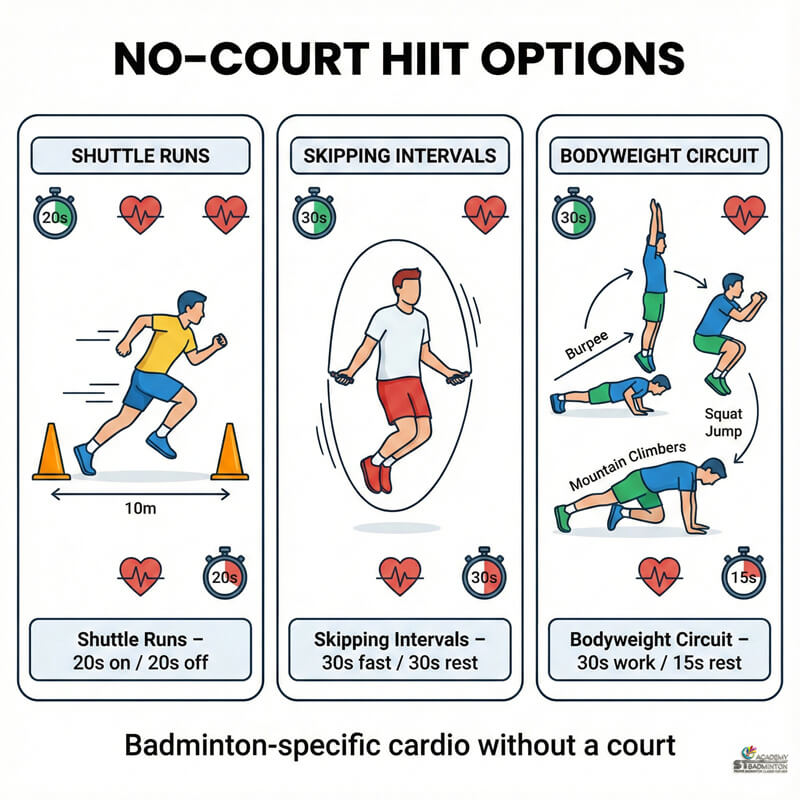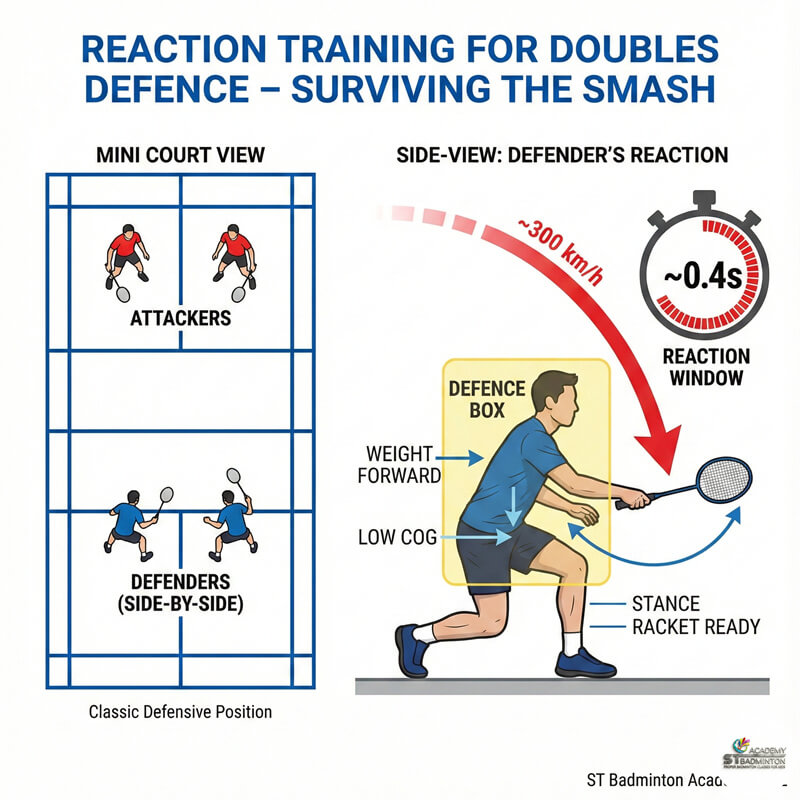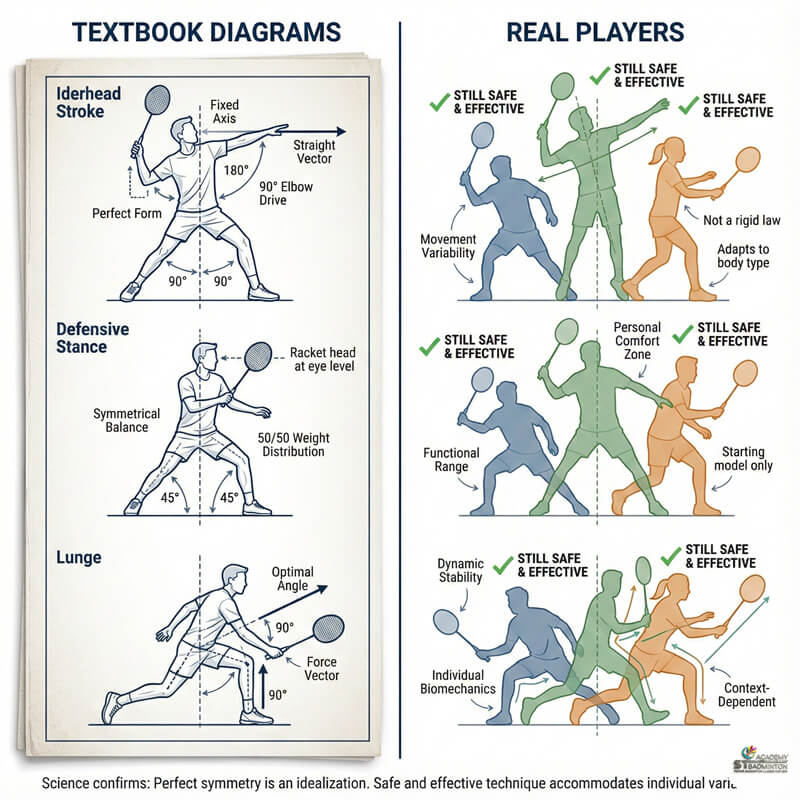Welcome to ST Badminton Academy in Malaysia! Whether you’re playing singles or doubles, it can be hard to achieve success on the court. But with these badminton singles tips, you can dominate your opponents! With just a few adjustments, you’ll be able to take control of the game and win more sets than ever before. Here are three essential tips for upping your badminton skills, follow our badminton coach’s guidance to help you improve more.
First of all, practice makes perfect when it comes to mastering the fundamentals of badminton. Many students, especially in Malaysia, don’t enjoy focusing on the basics at the beginning. However, after a few months, they start to see results and become more dedicated to building a strong foundation. Working regularly on basic shots, such as clears and drops, will help improve your accuracy and precision over time. Additionally, it’s important to focus on improving your footwork, which will allow you to quickly position yourself during rallies. Ultimately, the key to success in badminton is to outmaneuver your opponent and disrupt their balance as much as possible.
Finally, pay attention to your overall strategy for each rally and match. This means studying up on different tactics like serve-and-follow or clear-and-drop combinations beforehand so that you know what move to make at any given moment. Planning ahead will give you an edge against less experienced players who aren’t familiar with advanced strategies yet.
Overview Of Badminton Singles
Badminton singles require skill and agility, in this game, two players face off in an attempt to score points against each other. The rules of badminton singles vary slightly from doubles; for instance, the court size shrinks from 44-feet x 20-feet to 17-feet x 44-feet. This change forces singles competitors to move around more quickly as they must cover both sides of the court on their own. Scoring in badminton follows the standard 15/30/45 point system, with rallies ending when one player reaches or exceeds 21 points or has a two-point lead at 29 points. Additionally, there are specific strategies and tactics used by different types of players depending on their experience level and playing style. For example, experienced players will use advanced techniques such as drop shots, clears, smashes, and serves during a match while beginners may focus on mastering basic skills like footwork drills prior to competing in tournaments. Regardless of whether someone is just starting out or is already an expert badminton player, it’s important to have proper badminton training before attempting any type of competitive play. With these tips in mind, you can be sure to dominate your opponent on the court!
Preparation And Warm-Up
Did you know that badminton singles players use an average of 12 different shots in one game? To ensure success on the court, it is essential for a player to get adequately prepared and warmed up before starting. Here are four important steps toward achieving this goal:
- Preparation Exercises: Doing short exercises like running, jumping jacks or squats can help increase heart rate and prepare the body for physical activity.
- Warm-up Drills: Before playing any matches, players should practice basic techniques such as footwork drills, racket swings, and shuttle control. This helps them familiarize themselves with their gear and move more efficiently during gameplay.
- Gear Selection: It’s important to choose the right equipment like rackets, grips, shoes, and shuttles which suit your style of play. The wrong kind of material can cause discomfort while playing and may lead to injuries over time.
- Body Stretching & Nutrition Planning: After completing preparation activities (like those mentioned above), don’t forget to take some rest between games – stretching muscles reduces fatigue and improves performance during competition; plus eating nutritious food boosts energy levels throughout the day!
Badminton singles require focus, strategy, and agility from their players – proper preparation goes a long way in helping athletes reach peak performance levels on the court!
Grip Variations
When playing badminton, your grip is important for achieving the proper technique to perform a shot. There are three basic grips used in singles: forehand, backhand, and overhand. The forehand grip is the most common grip when hitting from the front court as it provides the greatest control of power and accuracy for shots such as clears or drops. The backhand grip allows for more wrist movement which is needed during smashes and other powerful shots from the rear court. Finally, the overhand grip gives you greater control than either of the other two when attacking low net shots.
Grip variations can be further developed depending on where you’re positioned on the court and what type of shot you’re attempting to execute. For instance, if you’re aiming a drop shot close to the net then an even lighter touch with a modified version of your normal forehand grip will allow you to keep precise control while still creating enough spin so that your opponent won’t be able to reach it easily. If you’re smashing from mid-court positions then slightly altering your usual backhand hold by adding some extra pressure with your thumb may help increase power without sacrificing accuracy in return.
No matter what situation arises, having multiple options at hand will make sure that your game stays varied and unpredictable; allowing you to outplay opponents who can only rely on one type of stroke or technique throughout their matches!
Serving Techniques
Having a solid grip on your racket is important for successful badminton singles play. Now that you have learned about the different grips, it’s time to get into some of the strategies and techniques involved in serving. A good serve can set up an entire rally or decide points outright, so mastering this skill is critical.
When playing singles, the proper placement of the shuttlecock is key when serving. Since there are fewer players available to cover court space during singles than doubles, two main types of serves should be used: power serving and drop serving. Power servings are powerful shots aimed at either the backhand or forehand corner with enough force that they cannot easily be returned by your opponent. Drop serves to involve less power but instead focus on precise placement near the net which requires precise aim from your opponent in order to return it successfully.
The best way to improve both power and accuracy when serving is through practice drills such as trying to hit the same spot repeatedly with your service until you reach perfection. This repetitive exercise will help build the muscle memory needed for more complex situations on the court while improving confidence in yourself and your game overall. Ultimately, honing these skills will help you dominate any match situation against any type of player!
Return Techniques
Returning the shuttle in badminton is a crucial component of the sport. To be successful, players must employ an effective return technique to dominate their opponents on the court. Proper positioning and strategy are essential when executing this skill.
When receiving shots from your opponent, it’s important to maintain a strong posture while you prepare for your next move. Keeping your body low and close to the ground will help you stay well-balanced and respond quickly as needed. It’s also beneficial to keep your racket angled correctly so that you can direct the shuttle back toward your adversary with speed and accuracy.
Finally, being aware of where the opposing player is standing on the court is key for making sure your return lands in a strategic location. If you anticipate their position correctly, you can send back difficult-to-reach shots or force them into awkward situations which could give you the upper hand during gameplay. By understanding these fundamentals of returning shots in badminton, players can gain a major advantage over their opponents and increase their chances of success on the court.
Footwork Strategies
Now that you know the return techniques, it’s time to focus on footwork strategies. Good badminton footwork is super important according to our badminton coach, especially for court movement and shuttle control. To get into proper foot positioning during a game, try lateral movement drills like stepping side-to-side or forward and back while keeping your eyes focused on the shuttlecock. This will help you stay light on your feet as well as prepare you when an unexpected shot comes at you from any direction.
It’s important to be mindful of where your feet are in relation to the playing surface; make sure they remain within the boundaries of the court. Also, consider how much pressure each step requires; too much can slow down your reaction time whereas not enough won’t allow for optimal power behind every stroke. With practice, you’ll find what works best for you and move around with confidence.
Additionally, strive to use quick movements rather than broad ones so that there’s less time between strokes and more opportunity for successful shots. You’ll want to keep your body low and close to the ground in order to maintain balance throughout various types of maneuvers such as lunges or split steps. All this coordinated effort will improve agility while allowing you to take command of the game with greater ease.
Offensive Play Tactics
Offensive play tactics are a key factor in dominating the court during badminton singles. To maximize offensive stroke play, it’s important to mix up net shots and deep clears with drop shots and smashes close to the net. When playing at the net, use aggressive strategies like pushing your opponent back while controlling the shuttlecock by using deceptive angles and quick reflexes.
For smash attack techniques, practice aiming downwards towards your opponent’s mid-court instead of attempting powerful cross-court smashes. This will force them to move rapidly or risk being hit with an easy winner. It is also essential to vary speeds when hitting a smash shot so that your opponent cannot predict what type of shot you’ll be making next.
Finally, good control of the shuttlecock comes from having sound technique combined with timely changes in direction and speed of movement around the court as well as on shots. Utilizing these various elements gives players more freedom over their opponents and makes it easier for them to score points through strategic placement rather than relying only on power. With this approach, badminton players can quickly gain momentum and make their mark on the game.
Defensive Play Strategies
When playing singles in badminton, defense is a crucial aspect of the game. It can be intimidating to think about defending the entire court against an opponent’s attack. However, with practice and the right techniques, it is possible to dominate on defense.
One way to become a better defender is by knowing how to move your feet quickly and efficiently around the court. Being able to stay low while moving around will help you anticipate your opponent’s shots more accurately. To do this well requires agility as well as quick reflexes. If you are struggling with this technique then make sure to take some time out of each practice session to focus specifically on footwork drills.
Another important defensive strategy for singles play is learning how to use deception when returning shots. This involves using strategies like changing up shot speeds or directions at the last minute which could potentially throw off your opponent’s timing and placement of their shots. Additionally, being able to vary between attacking and defending strokes can also give your opponent something unexpected that they may not have anticipated beforehand which will allow you to gain control over rallies and ultimately win points.
By implementing these tips into one’s game, it will be easier for any player – regardless of skill level – to find success on the badminton court in terms of defensive play tactics. Utilizing both quick footwork and deceptive returns are key elements that should be incorporated into any player’s game plan if they want to stand their ground against their opponents during heated matches.
Mental Focus Tips
Mental focus is an essential part of playing badminton at a high level. Improved concentration can help you stay in the present moment, anticipate your opponent’s shots, and make quick decisions on the court. Developing mental clarity and discipline will also help you increase your performance during singles matches. The following table outlines some useful techniques to improve your mental focus from our coach:
| Techniques | Description |
|---|---|
| Visualization | Take time before each match to practice visualizing yourself executing successful plays. This helps create positive associations with increased confidence and better results in-game. |
| Deep Breathing | When things get tough, take deep breaths to calm down and refocus on the task at hand. It’s important to maintain emotional control when competing at a high level. |
| Positive Self Talk | Create motivational phrases that remind you of your strengths as a player, such as “Stay focused” or “You got this!” Having these mantras handy will keep you mentally strong throughout the game. |
| Timeouts/Breaks | If necessary, take brief breaks between sets or points to collect your thoughts and restore energy levels for optimal performance. Don’t let fatigue affect how well you play! |
By implementing these simple strategies into your pre-game preparation and during actual gameplay, you’ll be able to gain an edge over your opponents by honing your mental focus skillset. With dedication and practice, these tips can help bring out the best version of yourself on the badminton courts!
Recovery And Reflection
Now that we’ve discussed the mental focus tips for badminton singles, let’s explore recovery and reflection strategies. A recent survey of professional badminton players found that 94% felt it was essential to take time after a match or practice session to rest and recuperate before preparing for their next activity. It is important to recognize when our bodies need a break, in order to maximize performance during future matches.
In order to achieve success on the court, consider these three key points:
- Mental preparation: Take some time each day to visualize yourself playing your best game – this can help you stay calm and focused during physical exertion.
- Footwork techniques: Developing good footwork is critical for moving around quickly and efficiently on the court. Practice drills such as shuffling side-to-side, jumping jacks, skipping or running will all help improve speed and agility.
- Singles Strategies: Become knowledgeable about different types of shots used in singles play (e.g., drop shot, smash). Learn how to use them effectively so you can outplay your opponents with ease!
Reflecting on past performances allows us to identify areas where improvement may be needed, as well as what strategies worked well – both mentally and physically. Ultimately, taking a few minutes at the end of each session to recover fully while reflecting on our experiences helps us become better badminton players over time.
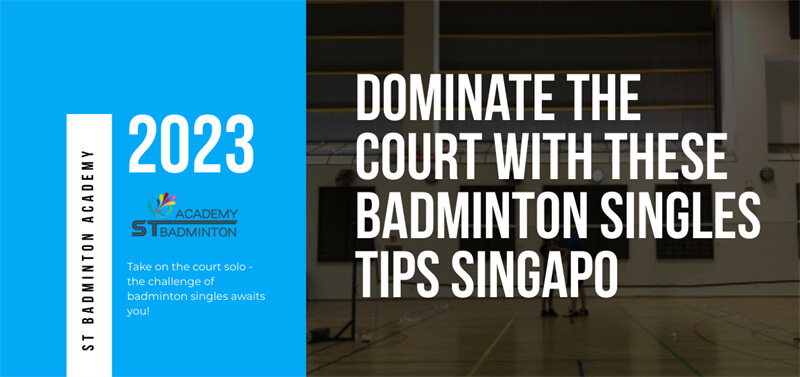
Frequently Asked Questions
What Type Of Badminton Racket Should I Use?
Choosing the right badminton racket is an important part of playing this fast-paced and exciting sport. Knowing how to select your racket size, strings, grip size, and weight can make a big difference in your game. Here’s what you need to know when it comes to selecting the ideal badminton racket for yourself:
- Racket Size Selection: The length of your badminton racket should be proportional to your own height; shorter players tend to prefer shorter rackets while taller players gravitate towards longer ones. Additionally, consider your strength as well – if you’re a more powerful player with good arm speed, then choose a heavier racket that offers greater control over shots.
- Racket Strings: When it comes to string tension, again consider both your skill level and power output on the court. If you’re relatively new to the sport or don’t generate much power when swinging at the shuttlecock, choose low-tension strings that offer more forgiveness on off-center hits. On the other hand, advanced players may want slightly higher tensions for added control and accuracy on their shots.
- Grip Size & Weight Selection: Lastly, confirm that your chosen badminton racket has a grip size suitable for your hands – too small a grip won’t allow you enough leverage during swings while one that’s too large will cause fatigue due to excessive strain being put onto wrist muscles during playtime. In terms of weight selection, remember that lighter rackets usually give more maneuverability but less stability whereas heavy models provide extra power but lack agility compared to their lighter counterparts.
In summary, selecting the correct badminton racket requires considering several factors such as its size relative to yours (height & strength), string tension suited best for skill level & shot power output, proper grip size, and lastly appropriate weight depending on whether you prioritize control or agility during gameplay!
What Are The Most Important Rules Of Badminton Singles?
Ah, badminton singles. What a classic game! The rules of the sport are simple: two people hitting a shuttlecock back and forth over a net until one person scores more points than the other. It sounds easy enough, right? Well, not quite. If you want to dominate the court with your badminton singles skills, then it’s important to know all the rules and regulations that come along with playing this beloved game.
Let’s start with the basics: in badminton singles play, there are several key rules that players must abide by in order for their match to be considered legal. First off, each player may only use one racket at a time – no doubles allowed here! Additionally, players must remain within their designated court area while playing; any shots played outside of these boundaries will not count as points toward either side. Finally, when serving or receiving a shuttlecock, players must make sure they allow it to cross over the net before attempting to hit it back – otherwise, they will lose a point(s) for their mistake.
Now that we’ve got those basic rules down pat, let’s move on to some slightly more complex regulations surrounding badminton singles play. Here are just a few examples of what you should keep an eye out for Firstly if both opponents simultaneously hit the shuttlecock into each other’s courts without it touching either ground first (i.e., “letting”), then neither side gains/loses points from this exchange. Secondly, if either player touches any part of the net during gameplay (with any body parts), then they automatically forfeit point(s). And lastly, if someone steps completely outside of his/her court at any stage during playtime- regardless of whether or not he/she was trying to return the shuttlecock – then again they automatically forfeit point(s).
So now that you know all about badminton singles rules and regulations – get ready to take control on the court like never before! With this knowledge under your belt, you’ll be able to whip up some serious competition against even veteran-level opponents in no time flat!
How Long Should A Warm-Up Last?
When it comes to badminton singles, the warm-up is an essential part of any match. Understanding how long your warm-up should be and what exercises you should do can help ensure that you’re prepared for a great game.
A good rule of thumb when it comes to warming up for a badminton singles match is to plan on doing light exercise for 10 minutes or more. This gives your body enough time to get used to moving around and loosening up but not too much so as to tire yourself out before the game even begins. It’s important to note that there may be differences in how long each player needs depending on their individual fitness levels, so adjust accordingly if necessary.
There are plenty of exercises one can incorporate into their own personal badminton singles warm-up routine. Here are some examples:
- Light jogging/running
- Stretching (especially arm and leg stretches)
- Leg lifts
- Jumping jacks
- Skipping rope
These activities will all help prepare your muscles for the upcoming match, improving overall performance during play. Additionally, make sure to take breaks between each activity so that you don’t overwork yourself before the big game!
To sum up, a proper badminton singles warm-up is key in order to perform at your best during a match. Aim for 10 minutes of light exercise including stretching and various other activities such as running, jumping jacks, and skipping rope – taking breaks between sets as needed – and you’ll be ready to go!
How Often Should I Practice Badminton Singles?
When it comes to badminton singles, practice is key. To become an expert in the game of badminton, regular and consistent practice is essential. Frequency and intensity are important factors to consider when deciding how often one should practice badminton singles.
In terms of frequency, players should aim for at least three or four days per week. This will ensure that not only does the player maintain their current level but can also make progress with improving their skillset. Additionally, the duration of each session should last between 30-60 minutes depending on the individual’s preferences and goals. It’s a good idea to alternate between different drills and techniques to keep things interesting while still making sure you’re focusing on all areas that need improvement. This could be anything from basic footwork exercises to more advanced shots like clears or smashes.
Consistency is also another factor that cannot be overlooked when discussing badminton singles practice frequency; this means dedicating time each day even if there isn’t enough time for a full session – just ten minutes a day can help you stay sharp and build momentum over time as long as you remain focused throughout your sessions. Furthermore, make sure that every single session counts by setting yourself achievable targets so that you’re always pushing yourself further instead of repeating what has already been done before.
Regularly joining badminton training for singles helps improve consistency in shots, accuracy in technique, the power behind swings, agility around the court, and an ultimately better understanding of plays during match situations – ensuring domination come competition time!
How Do I Prevent Injuries When Playing Badminton Singles?
Playing badminton singles can be a blast, but it is important to stay safe while having fun. Preventing badminton injuries starts before the game even begins by ensuring you are properly warmed up and stretched out. Here are some tips for playing safely and preventing badminton injuries:
- Stretch Before Playing: Stretching before any physical activity helps loosen your muscles and get them ready for action. Taking a few minutes to warm up with stretches like arm circles or leg swings will help ensure that your body is prepared for whatever comes its way on the court.
- Wear Proper Shoes: Wearing shoes designed specifically for badminton will give you better traction on the court and provide additional support to keep you from slipping or rolling an ankle.
- Drink Plenty of Water: Dehydration can lead to fatigue which puts players at higher risk of injury during intense physical activity such as badminton singles matches. Keeping yourself hydrated throughout the match will help prevent cramping, dizziness, fatigue, and other potential risks associated with dehydration.
- Get Adequate Rest Between Matches: Resting between matches gives your body time to recover after exertion so that you’re in prime condition when returning to competition again later in the day or week. Allowing adequate rest times also reduces the chance of overuse injuries caused by repetitive motions without proper recovery periods in between sessions.
Taking these precautions while playing badminton singles can help protect against injury, allowing you to enjoy all aspects of the sport safely! Remember – safety first!
Use the Correct Racket and follow the Rules Practice More
Playing badminton singles can be a great way to stay in shape while having fun. With the right equipment, rules, and practice, you’ll be dominating the court in no time!
First off, it’s important to invest in a quality racket that suits your playing style and skill level. Secondly, learn the fundamentals of the game such as proper stance, grip technique, etiquette rules, etc. Finally, give yourself enough time for a warm-up before each match and maintain regular training sessions for best results.
By following these tips I’m confident that you will become an unstoppable force on the court. After all, champions aren’t born overnight – they are made with hard work and dedication. So get out there and train like Michael Jordan practiced basketball: relentlessly! Your opponents won’t know what hit ’em when you take them down with your powerful serves and smashes. Thank you for reading!
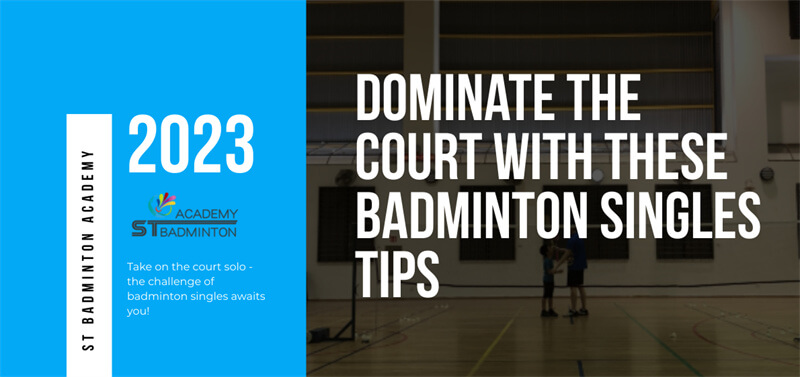
Back to the training home page.

